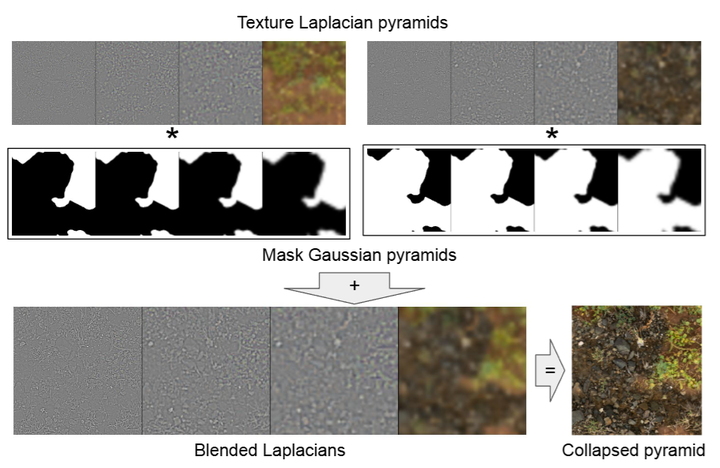
Abstract
Texture and material blending is one of the leading methods for adding variety to rendered virtual worlds, creating composite materials, and generating procedural content. When done naively, it can introduce either visible seams or contrast loss, leading to an unnatural look not representative of blended textures. Earlier work proposed addressing this problem through careful manual parameter tuning, lengthy per-texture statistics precomputation, look-up tables, or training deep neural networks. In this work, we propose an alternative approach based on insights from image processing and Laplacian pyramid blending. Our approach does not require any precomputation or increased memory usage (other than the presence of a regular, non-Laplacian, texture mipmap chain), does not produce ghosting, preserves sharp local features, and can run in real time on the GPU at the cost of a few additional lower mipmap texture taps.